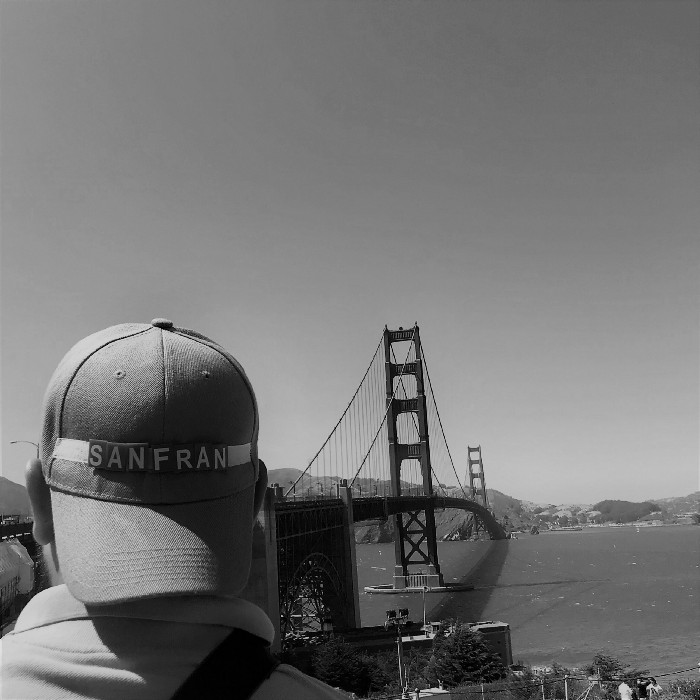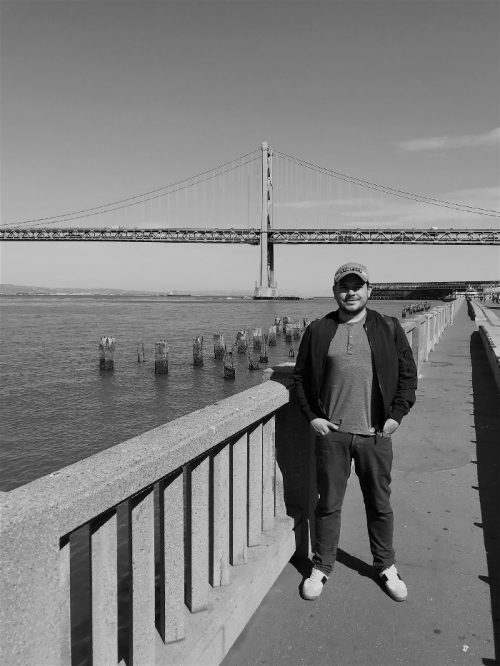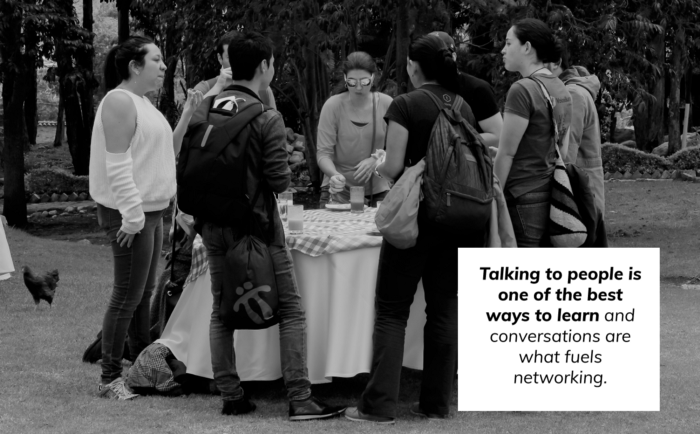Here are all the resources you need to make the most out of a trip to Silicon Valley.
Welcome to our blog series — How We Work. Want to know what it’s like to work at Bunny Studio? Want to learn how we solved workplace challenges?
This week, we’re talking about our Silicon Valley Experience framework. How do we encourage global awareness in our team? Read on to find out.
Oh, and while you’re here, why don’t you read last week’s edition of How We Work? It’s all about how we fostercandid feedback.
But if you prefer to watch a video instead, click here:
https://youtu.be/waVpAzqATzI
What’s the challenge?
Education is critical for success. While there are many ways to learn, online courses and events among them, in-person interaction is a key component of fostering professional and educational relationships. For tech startups, a lot of those interactions and educational opportunities take place in Silicon Valley. For those who work remotely, it’s a place that can feel unreachable due to time or financial constraints.
So, that’s the challenge. How can a remote start-up make Silicon Valley and its educational opportunities more accessible to its employees?
What’s the solution?
By removing those barriers and sending team members on a trip to Silicon Valley that benefits both the team member and the company as a whole.
It’s that simple.
As part of Bunny Studio’s educational efforts, the company offers the Silicon Valley Experience, a two-week, sponsored excursion so team members can come to understand the workings of Silicon Valley, as well as learn from the people and resources available there. Upon their return, they share these learnings with the rest of the team, ensuring that the experience benefits everyone, not just the person who traveled.
This trip also breaks down barriers and provides inspiration. For most people, including us, Silicon Valley can seem like a long way away. By providing our team members with this experience, we help build a more globally-aware team.
In Silicon Valley, everyone talks about changing the world for the better. It’s a mindset that we admire and that we want our team members to experience first-hand.
Why does it work?
A dedicated trip to the San Francisco area allows participants to spend two weeks learning and networking at the heart of the tech startup world.
During their visit to the Valley, the team member is tasked with learning as much as they can while meeting with people with different perspectives and mindsets in order to enrich their understanding of the tech world. This trip is not for business; it’s for educational purposes only.
The rest of the company also learns from the experience, too. As a remote company, learnings from other people’s experiences in Silicon Valley helps keep all of us connected to the heart of the tech world.
How does it work?
The Silicon Valley Experience is composed of four stages.

Application.
In order to be eligible to apply for the Silicon Valley Experience, a team member must work full-time and have been a team member for at least one year. The application process is as follows:
- Establish a learning goal. What is the team member most interested in? How can this experience help their career grow?
- Trip brainstorming and planning. The team member should compile a list of companies they want to visit, events they want to attend, people they want to meet, etc. Company leaders and fellow team members may have suggestions as well. Then, the team member should decide on five classes, meetups or summits. They should also start contacting potential mentors and set up at least three meetings. Contacting potential mentors can be stressful, but our company co-founder Alex Torrenegra published a framework that makes the process easier and explains its importance. One key thing to remember? Contact lots of people. Not everyone will respond or be up for a meeting, but many will. Keep at it and don’t get discouraged.
- During the two week trip, time management is key. In total, the team member should set aside the following time: 3–4 days to go to events, summits or conferences. 3 lunches or dinners with mentors, 2–3 days for recommended visits (see below).
- Make an expenses spreadsheet. The team member should provide quotes for the classes, events, etc. they are planning on attending. There is no need to quote the cost of plane tickets, lodging, food, and health insurance. Our People Ops team already has estimates for those.
- Apply. At Bunny Studio, the application deadline is the 6th week of the quarter if a team member wishes to be considered as a candidate for next quarter. Decisions are made on the 8th week of the quarter by company committee comprised of business unit leaders, chapter leaders, and members of People Ops is responsible for the selection of successful candidates.
Silicon Valley and all that it offers can be overwhelming. We recommend the following resources to help with planning the trip.
- General Assembly
- Startup Digest
- The Entrepreneur Events
- Meet Up
- Eventbrite
- Nasdaq
- Tech Meme
- Lanryd
- Moonbar
- Igniter
- Tech Venue
- Web Wallflower
- The boozeletter
- Hacker Dojo
Before the visit.
Like with all travel, there’s some admin to do before the Silicon Valley Experience starts.
It’s the responsibility of the travelling team member to secure a US tourist visa, as well as coordinate their travel expenses with the Finance team. Bunny Studio sponsors the full cost of the trip. Some expenses, like lodging and event bookings, need to be paid for in advance. For expenses while traveling, we provide a travel card for the length of the trip. As is usual with these things, the traveling team member should keep receipts and invoices of all expenses.
Also, the travelling team member and their leader should work together to coordinate the team member’s working hours during the trip. The trip and the educational opportunities presented by it should be top priority during those two weeks and, as a consequence, work responsibilities should be light. Once working hours have been devised, these should be stated on the team members calendar, allowing everyone else to know their movements and availability.
Oh, and one more thing — there will be ample opportunities for networking during the experience so the travelling team member should bring plenty of business cards. To help with networking, we recommend reading the following resources in order to become familiar with Silicon Valley lingo and current affairs.
During the visit.

Talking to people is one of the best ways to learn and conversations are what fuels networking. While in Silicon Valley, the team member should make a concerted effort to engage in conversations. They should listen carefully, join when appropriate, and find ways to align their challenges to the stories being told. Asking good questions is important, too. Personalize them by asking questions that directly call on the experience of the other people in the conversation. For example, “what was your main challenge when it came to monetizing?” is a more engaging question than “what are some of the challenges that come with monetizing?”. The latter question is vague, while the former is specific.
Oh, and those business cards we mentioned? They should on hand at all times. That way, should a networking opportunity unexpectedly pop up, they’re available for exchange.
Remember — persistence beats resistance. Some people will say no to a networking request, but other people will say yes. Getting to the “yes” answers can take some time, but they will come. Like Linda Rottenberg, CoFounder of Endeavor said, “Stalking is an underrated growth strategy”. Persistence is key to finding a great mentor. That means not being afraid to approach someone and start a conversation. That, after all, is the essence of Silicon Valley.
In addition to networking and mentoring, the participating team member should be prepared to ask personalized questions at the classes and events they attend. This may sound obvious, but asking questions is the best way to engage anyone in any conversation, future mentorship, or alliance. The team member should spend time reading about the events they’re attending and the speakers who will be presenting in order to prepare their questions in advance.
The goal of this experience is for both the team member and the company as a whole to learn together. For that reason, the team member should take notes during or after every mentorship, event or class. These notes are then shared with the rest of the team upon their return. In that way, their learnings also contribute to the team’s learnings.
Not all education during the trip has to take the form of a conversation or event. We also ask that team members choose three places of interest to visit. These could be museums, parks, universities… places that stretch the mind. Here’s our recommended list:
- Computer History Museum
- Tech Museum of Innovation
- The Internet Archive
- Stanford University
- Intel Museum
- Walt Disney Family Museum
- Exploratorium
- Golden Gate Park and its museums (The California Academy of Sciences, de Young and The Legion of Honor)
After the visit.
After returning home, once the Silicon Valley Experience is over, the team member writes a blog post about their experience. They also share the notes they took during the trip. This is so everyone at Bunny Studio can learn from the experience, too.
And, of course, the team member should give the receipts and invoices they collected during the trip to the Finance team.

Anything else?
But enough about how it works. What do the people who’ve gone on the Silicon Valley experience have to say about it? What did participants value the most? Has there been a lasting impact?
For Juan Camilo, who went on the Silicon Valley Experience a few months ago, the experience was a fruitful one.
“What I valued most was being able to work from different spaces every single day and meet new people who I could add to my network. I’ve stayed in contact with people I met during the Experience, and we’re already looking into running events online with a few of them”.
At Bunny Studio, we know the value of education and in-person meetings. We also know that sometimes the best way to learn is to immerse yourself in it. Because of that, we support the Silicon Valley Experience. After all, a well-educated and globally-aware team is a stable and successful one.









